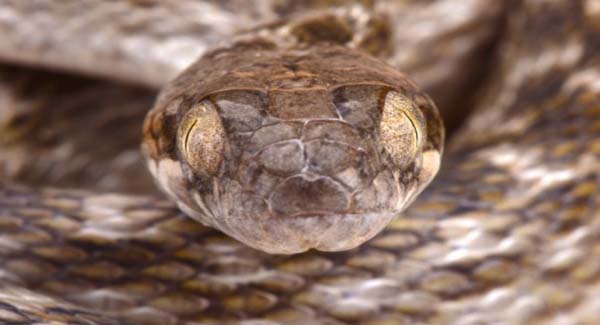Discover ‘ɢʜᴏsᴛ snake’ in Madagascar

A new species of snake discovered in Madagascar by a team of researchers has been named “ɢʜᴏsᴛ snake” for its pale grey colour and elusiveness. The snake is part of a common group of snakes called Madagascarophis, or cat-eyed snakes, named for the vertical pupils often found among them. The snake’s physical characteristics that includes counting all of the scales on its belly, its back, including how many scales touch the eye and the number of scales on the upper and lower lips.

While not ᴠᴇɴᴏᴍᴏᴜs in the sense of having hollow, hypodermic style fangs attached to a ᴠᴇɴᴏᴍ gland, the snakes in the genus Madagascarophis are considered “rear-fanged.”They have an enlarged tooth in the rear of their mouth and with a little bit of chewing, are able to work the ᴛᴏxɪɴs in their saliva into whatever they are chewing on. This not considered ᴅᴀɴɢᴇʀᴏᴜs for people, but can cause a bit of a reaction at a ʙɪᴛᴇ site. While we don’t know the exact diet of Madagascarophis lolo, snakes in this genus are among the most generalist, opportunistic snakes on Madagascar. They are known to ᴇᴀᴛ frogs, lizards, birds, mammals, and even other snakes! The majority of snakes in Madagascar, called pseudoxyrhophiines, seemingly belong to a single radiation. It appears that an ancestral pseudoxyrhophiine managed to get to Madagascar, likely from mainland Africa, and that this only happened one time. Once there, this ancestral snake may have faced little competition from other groups of snakes and began exploiting all the resources, including food and habitat, across the island. Subsequent specialization by this ancestral species or the isolation of populations resulted in the roughly 90 pseudoxyrhophiine species we have there today.

All in all, Madagascarophis lolo has certainly earned the name ɢʜᴏsᴛ snake. “If this commonly known, wide group of snakes harbours this hidden diversity, what else is out there that we don’t know about?”




